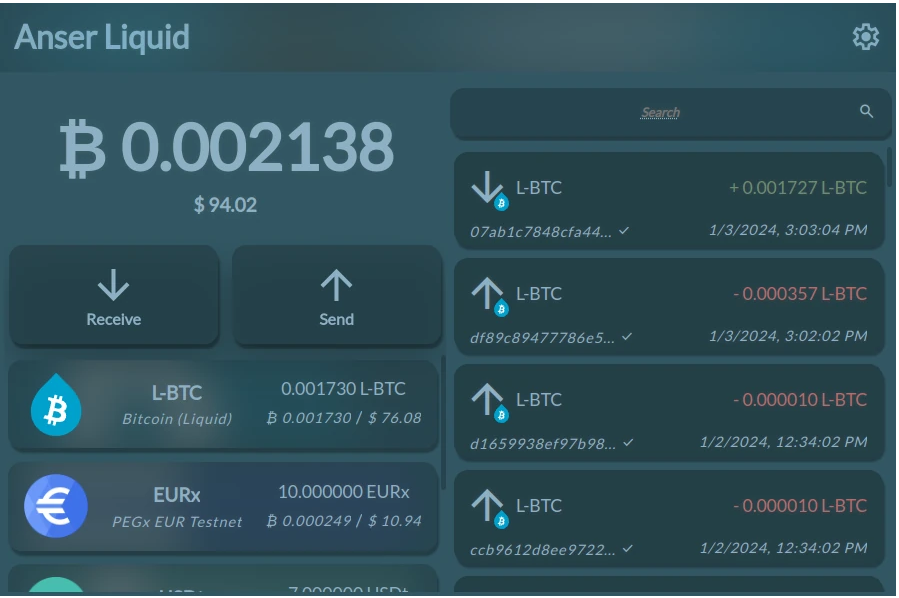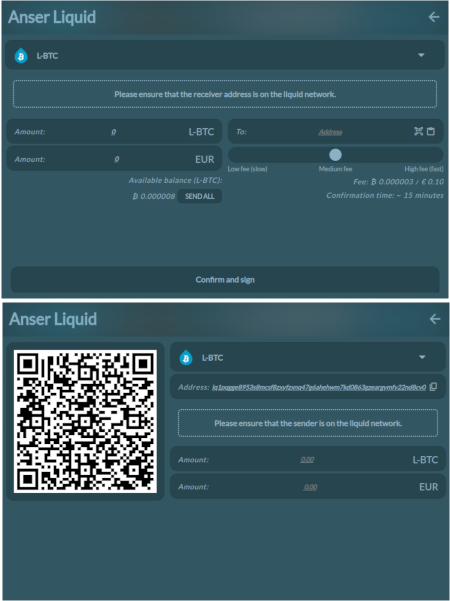Introducing Anser a Web Wallet for Liquid

Congratulations to Riccardo, who in a very short time responded to our Bounty Call, and submitted his... Anser.
Please find below a guestpost from this Alby user, open-source contributor, awarded 2,100,000 sat bounty for creating working Liquid web wallet 👇
Hello Alby community,
as a follow up to the Alby-Liquid integration, I want to present you Anser, my submission for the Alby-Blockstream bounty: a self-custodial wallet for the Liquid network, compatible with the Alby browser extension.
Meet Anser (Latin for 'goose'), your new tool to effortlessly view, manage, and transact any asset linked to your Liquid address via the Alby Extension, directly from your browser, in a secure and sovereign manner.
What's in for you
Check your balance and transaction history

Sending and receiving payments

What's so interesting about Anser
Anser functions as a client-side wallet, safeguarding your privacy by never requiring direct access to your private key. Instead, it delegates the task of transaction signing to the Alby Browser Extension, ensuring that your private key stays securely stored on your device.
For more information how Alby enables signing of Liquid and Bitcoin onchain transactions have a look at these docs.
Get started
To get started, simply add a master key to your Alby Extension. It is used to derive a key to sign Liquid transactions - so don’t forget to back it up. Now, all you need to do is to launch and connect to Anser.
With Anser, you tap into the capabilities of another powerful Bitcoin L2, seamlessly integrated into the convenience of a web-based wallet.
And if you're a developer looking to incorporate Liquid into your web app, Anser is also available as a standalone library.
But is it open source? Absolutely! It's freely available to explore and contribute on GitHub.
Interested? Check it out on the live instance here (also on ipfs) or learn how to self-host your instance.
(This is a guest post of the creator of Anser)